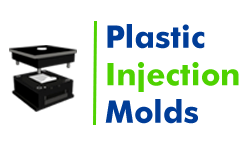- Mould Manufacturer
- Tooling
- Moulding Die
- Plastic Molding
- Plastic Injection Molding
- Injection Molding
- Nylon Injection Molding
- Injection Moulding
- Custom Injection Molding
- Injection Mould
- Injection Mouldings Process Manufacturers
- Medical Injection Molding
- Polycarbonate Injection Moulding
- Rapid Injection Moulding
- Injection Molds
- Injection Molding Cost
- Injection Molding Suppliers
- Injection Moldings
- HDPE Molding
- Metal Injection Molding
- Rubber Injection Molding
- Mold Designing
- Prototyping
- Automotive Injection Molding
- Blow Molding
- 3D Printing
Rubber Injection Molding: Identify The Leader
The injection molding process leading to the creation of individual rubber parts is a complicated task. You might have concerns about minimizing stress and using the final parts. The rubber injection molding specialists need to comply with the basic rules and regulations so that the parts are easy to produce and the applications successful. We are an expert dealing with rubber injection molded parts and are thoroughly aware of the basic methods of production.
Know the process of rubber injection molding:
The rubber injection molding is used for the production of very small parts required for the body panels of automobiles. Here is what you need to know:
- The process produces parts with quick cycle times when compared to transfer and compression molding.
- It eliminates the need for performs to create complete parts and saves the hassles of a labor-intensive step.
- Enhanced versatility fro durometer shores is an advantage.
- As the material undergoes preheating before being inserted into cavities, it reduces the viscosity of the material and aids the ease of flow into the cavities.
- The process helps in the creation of custom rubber shapes and liquid silicone rubber may produce parts that demonstrate tight tolerance and precision.
- It helps in saving time and money when massive volumes of rubber part runs may e needed.
From customized and precision rubber tools made to suit the specifications of customers, we modify the proprietary processes to meet your requirements of producing rubber parts. The in-house potential of our company enhances the efficiency of production and help I in delivering the rubber parts quickly.
Why choose polymer injection molding process?
The polymer injection molding process is an excellent method of producing large volumes of plastic parts quickly with high surface quality, and the choice of different resins. Here is what you need to know.
- The process produces complex shapes when performing under high pressure that presses the plastic harder.
- The plastic part produced has great potential of designing.
- The fillers used in this process reduce the density of the plastic during the molding procedure, which increases the strength of the molded parts.
- After the completion of this procedure, the process needs to repeat a few times to produce plastic injection molded parts from a single mold.
Polypropylene injection molding: easy to handle
With Polypropylene injection molding, you get the benefit of an inexpensive material possessing high strength due to its semi-crystalline nature. It is used for multiple applications, such as packaging of consumer products and to meet the requirements of plastic components in the automotive industry.
EPDM injection molding: get the best outcome
The EPDM injection molding is beneficial as it offers high resistance against UV rays, weathering, aging, chemicals, and ozone. We are an expert dealing with injection molding in different materials, so call us to get the best deals.
Getting a Metal Injection Moulding Project Underway
Finely powdered metal is combined with a binder substance to generate a feedstock in the metalworking process known as metal injection molding. The final product is created by solidifying and shaping the feedstock. Metal Injection Molding is the best method for streamlining the manufacturing of items with complicated geometries or high production volumes.
Any variety of metals may be used as the process feedstock, although stainless steel is the most used kind. After the items are molded, the binder material is taken out, and the metal particles are refined to increase the material's tensile strength and durability. When compared to alternative techniques like CNC machining, the metal injection molding process has several benefits. Complex metal objects that are often hard to construct using traditional metal fabrication procedures may now be produced considerably more easily thanks to this technology.
A description of the Metal Injection Moulding method in general
Metal injection molding is excellent for swiftly and effectively creating exceedingly complicated parts. The metal injection molding procedure is quick, simple to replicate, and economical. Intricate pieces may be precisely molded and mass-produced in large quantities in a single process. The best part is that setting up subsequent production runs is quick and simple following your initial run, plastic injection molds would be pleased to supply you with an estimate on your project if you're seeking a partner who offers high-quality metal injection molding services.
The Metal Injection Moulding (MIM) technique offers cost-effective solutions for parts with extremely complicated component geometries by combining the architectural flexibility offered by injection molding polymer with the strength and quality of forged metals. MIM is a more affordable option than conventional metal forming methods including machining, and investment casting.
FAQ
- Q1. What Is The Process Of Rubber Molding?
Rubber molding is the process of making rubber components using injection or compression molding methods. Rubber is inserted into a mold cavity and compressed with heat and pressure during the compression molding process. Melted rubber is injected under pressure into a mold cavity via injection molding. Both processes produce exact, tailored rubber goods for a range of uses.
- Q2. What Is Injected Rubber?
Injected rubber refers to a manufacturing process where liquid rubber material is injected into a mold cavity under high pressure and heat. This method allows for the production of complex rubber parts with precise dimensions and properties. It's commonly used in industries such as automotive, electronics, and healthcare for producing seals, gaskets, and other rubber components.
- Q3. What Is Molded Rubber Made Of?
Molded rubber typically consists of synthetic or natural rubber compounds mixed with additives like fillers, plasticizers, and curing agents. These additives enhance properties such as flexibility, durability, and resistance to heat and chemicals. The mixture is then shaped using molds and subjected to heat and pressure for curing and forming the final product.







.webp)

